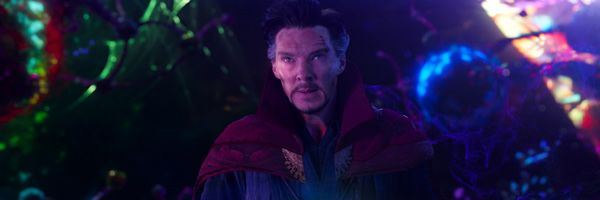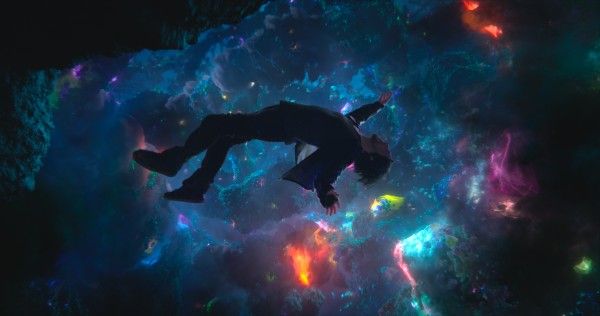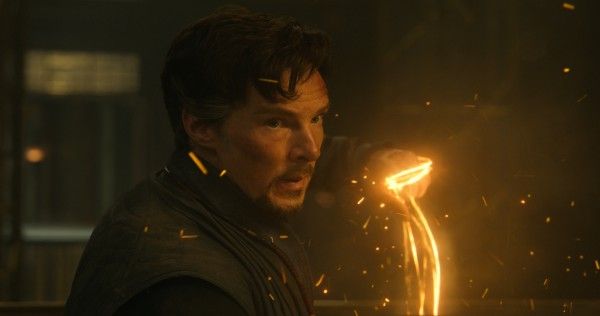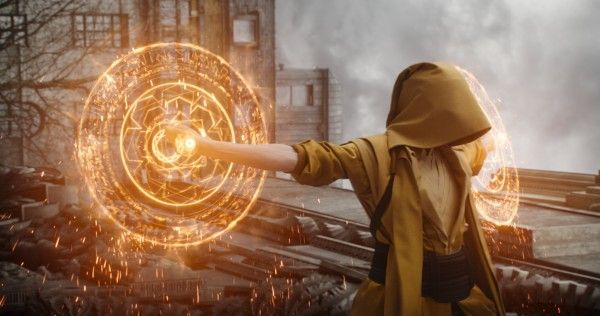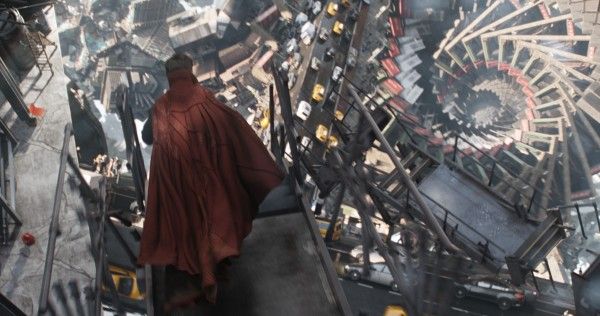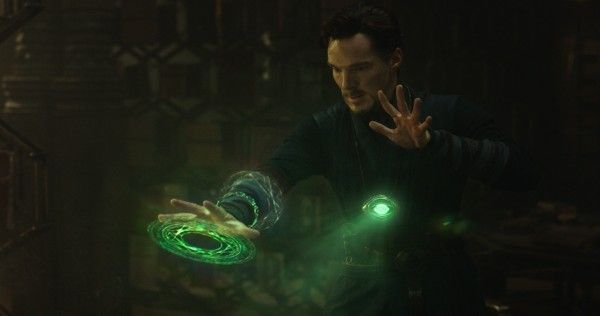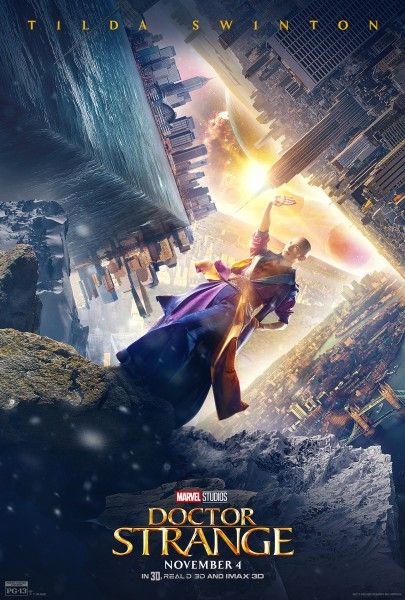The latest installment in the Marvel Cinematic Universe, Doctor Strange is still going strong at the box office. Telling the story of world-famous neurosurgeon Dr. Stephen Strange (Benedict Cumberbatch), who is as arrogant as he is gifted in an operating room, the film follows him on a unique and unusual journey, after a horrific car accident robs him of the use of his hands, changing his life forever, and he is forced to look for hope in a mysterious enclave in Nepal, where he discovers a battle against unseen dark forces bent on destroying our reality and must learn to use his newly acquired magical powers to defend the world.
During this exclusive interview with Collider, visual effects supervisor Stephane Ceretti talked about the visually stunning and mind-blowing effects that help transport audiences into the world of Doctor Strange, having a lot of time prior to filming to figure out how to do everything, making sure the VFX help tell the story, how it’s both exciting and scary to create a new visual world, raising the bar so tremendously high, having such a talented cast to collaborate with, the amount of different things they had to do, and how his previous work with Christopher Nolan and the Wachowskis has helped inform his work with Marvel.
Collider: This movie is visually stunning and mind-blowing, on every level. Usually with visual effects, you want them to blend in and be seamless and have people forget they weren’t actually there, but with this, there’s no getting around them. Is it cool to get to hear that appreciation that people have for the visuals?
CERETTI: Well, I’m not going to complain. It’s nice. We’ve been working on the film for two years, so it’s been a long, long process and a very difficult one. It’s visually very heavy, in terms of visual effects, but we also tried to balance the film and the effects and the story together, in a way where we don’t take people out of it. Even though we’re going crazy, you still have to relate it to what’s happening to the characters. It’s been very hard, in that sense, to find the right balance between things, and find the right effects. It’s very exciting to see that the audience is responding very well to it. We started from the streets of real New York that they know, and then go all the way to the crazy kaleidoscope Rubik’s cube version of New York, and pace it through the sequence to make it feel like they can fly with us and understand what we were trying to do. So, it’s good to see that they’re reacting well to it. It’s very exciting.
Any one of these sequences would be crazy, on their own, but you have countless crazy shots in this film.
CERETTI: The good thing on this film was that we had a lot of time, before we started to shoot, to try to figure it out. We pushed five months because Benedict [Cumberbatch] wasn’t available, so I started in September 2014, which is more than two years ago. Because of that, we had lots of time to figure things out and do some concepts and do a lot of pre-vis. We were lucky that Marvel said to keep going on pre-vis and concepts. It’s a difficult film and they knew that from the start, so they really gave us the tools to figure it out, from a script point of view and a visual point of view. We also worked together. (Director) Scott [Derrickson] was writing the script, as well, and we were all together, all the time. It was a creative campus of people, just trying to figure things out. The script was informing us in pre-vis, effects and editing, even before we started to shoot. Also, Scott had a lot of visuals that he came with on the project and he wanted to use. Charlie Wood, the production designer, and I worked on it together for a few weeks, initially, to try to sort things out, get some new ideas, and put even more visuals into the big stew we were doing, at the time. It was a feedback loop between the script and the visuals, all the time, which I think worked very well because they are integrated. I think it was successful that we had that time. We didn’t have much time in post, though. We had six months in post to do everything, so that was tough.
It’s amazing how much the visual effects help tell the story.
CERETTI: Yeah, and as we were going through the process, we figured that out. Usually, you have the script and you do storyboards, and then you go to pre-vis and you start shooting the film. Here, the storyboards were interesting, but they were not helping us enough, in terms of the visuals of the film because they were not dynamic enough. Everything in the film is dynamic. If you look at all of the environments we go through – be it the Magic Mystery Tour, which is that big sequence in the beginning, where he travels through all of the works, and then New York, Hong Kong and the Dark Dimension – everything is dynamic. The environments are never settled. They always move and change, they’re always dangerous, there’s always action in it, and there’s always camera moves. The storyboards were not conveying the ideas well enough, so we went into pre-vis very fast. That way, we could create the sequences and build them, from the start. The ideas are so out there, from the creative point of view, storytelling point of view, scripting point of view, and shooting point of view. Figuring out how to shoot everything was a big puzzle and a big nightmare. We had to work together and figure things out.
Did you grow up with comic books?
CERETTI: I’m French, so we had very little comic books from Marvel, at the time. I was reading Tintin when I was a kid. I wasn’t reading Iron Man, or all that stuff. We had one magazine in France that was comic books from Marvel, which was actually called Strange. Bizarrely, that was the only thing I knew about comic books. I’m not a big fan of comic books. I’ve done lots of comic book films.
This is part of the Marvel Cinematic Universe, but it’s also a whole new world.
CERETTI: Exactly! I did Guardians of the Galaxy, where they said, “Let’s do something different.” For this, they said, “Okay, you’ve just finished with galaxies, so now you’re going to go to dimensions.” It’s super cool. When you have to do that, it’s super exciting, but very scary, at the same time.
Now that you’ve raised the bar so high, where do you go from there?
CERETTI: I don’t know. We’ll see. It’s not a competition. This film requests it. This film, of all the Marvel characters and films, because it’s Doctor Strange and because it’s so based on psychedelic, out there, crazy stuff from the ‘60 and ‘70s with no boundaries, it all comes from that. This was the film where we had to not hold back, and just go for it. There were still certain places that we held back a little bit because it was just too crazy. It’s always about finding the right balance. In the end, we’ve got amazing characters and amazing actors, and we don’t want to take away from them. Actually, I think our collaboration with the actors, and showing them the pre-vis and the concepts for the effects that we were doing, helped them help us tell the story of the visual effects. They reacted to what we were showing them and they understood what we were trying to do. Their acting, their expressions, and the way they played it in the film was selling our visual effects. If that did not happen, people would not connect to it. It was all a big collaboration between everybody, at different levels.
What was it like to have such a tremendous cast to collaborate with?
CERETTI: They were so into it and up for everything. Benedict went through so many different stunts, rigs, wires, green screen, and putting them on treadmills with a motion base, where they had to jump and things were moving, all the time. He was in a harness for hours, flying. He did everything. It was amazing! It was really fun, working with him on all of this. And Tilda [Swinton], Chiwetel [Ejiofor] and Mads [Mikkelsen] were so involved, as well. We had a great cast. We were very lucky.
What was the biggest challenge you had on this?
CERETTI: Well, time and post. I think the biggest challenge was that everything was challenging. Everything was challenging, conceptually and technically. You can do a lot of things, nowadays, with the visual effects. It’s not easy, but it’s achievable. It’s the way you come up with the ideas and make them work in the story that’s the challenge, more than any technical challenge. We have tons of technical challenges, but to me, they are not the biggest challenge. To me, the biggest challenge is making something that works, visually, and tells a story. What was difficult was the amount of different things we had to do. We had to come up with so many different worlds, and all of the mundane magic that they use, like opening portals, playing with rune shields, and fighting with whips. There was such a huge range of things that we had to make sense of the rules for that, as well. There was also the story of the cloak and what we should do with that to make it a character. That was about finding out the best way and the best moment to tell that story and make it work with the way the actors are acting and the stunts.
There were so many different things, and everybody has a different opinion. You end up in the room with quite a few people – the director, the people from the studio and the editors. It was very challenging, in that sense, because there are so many questions that need an answer, on so many levels, that it’s very grueling. But, it’s exciting. That makes it interesting to do. And the nice thing is that everybody was really excited about the challenge. From the top of the studio, all the way to the artists in the facilities, everybody was trying to bring their best. Anything can work, as long as it tells a story. People were throwing ideas at us, even in post. We just wanted to push it. In that sense, Marvel is very collaborative and open to ideas from everywhere. If there’s a good idea, why not use it? Sometimes it’s like, “No, that’s not going to work,” but sometimes it’s like, “Yay!” We’re very excited about the whole process, so there’s cheering in the room. It’s pretty cool. You can’t complain. But, it was challenging.
How many total shots and sequences did you work on?
CERETTI: There’s 1,450 shots in the film, which is not a huge number. Guardians was 2,300 shots. But the complexity of the shots, in terms of design, was much bigger. It’s not so much about the sheer number of shots. It’s also about the complexity and variation of the shots. Every shot was a bit of a puzzle and a bit of, “Oh, my god, how are we going to do that?!” It was extensively difficult.
You’ve done films for Christopher Nolan and you’ve done films for the Wachowskis, who are also such visionary filmmakers. How were those experiences, and how did that prepare you for jumping into the Marvel Cinematic Universe?
CERETTI: I worked in Paris, in a place called BUF Compagnie, which at the time, was already a creative company with crazy visuals. I learned a lot there. That’s where I was put in contact with the Wachowskis and Nolan. We were the crazy French guys, who were coming up with these crazy ideas. I’ve been lucky in the sense that I’ve learned a lot from working with all of these people. They’re very visually driven people and very story driven people, as well. That combination between story and visuals makes a difference. I’ve met so many people throughout that process, some of whom are working at Marvel today. There were lots of people that I met on The Matrix that I worked with on the films with Nolan, and then at Marvel, as well. It’s a family of people. I think my path has been around these kinds of ideas and films and visuals, so I feel familiar with it. There’s a lot in [Doctor Strange] that comes from that experience. Scott has that kind of background, as well. He’s a huge movie fan. He knows everything. He’s got so much knowledge about films. It’s very impressive. It was an easy collaboration, in that sense. We were all very excited about all the ideas that were going into it.
Doctor Strange is now playing in theaters.

